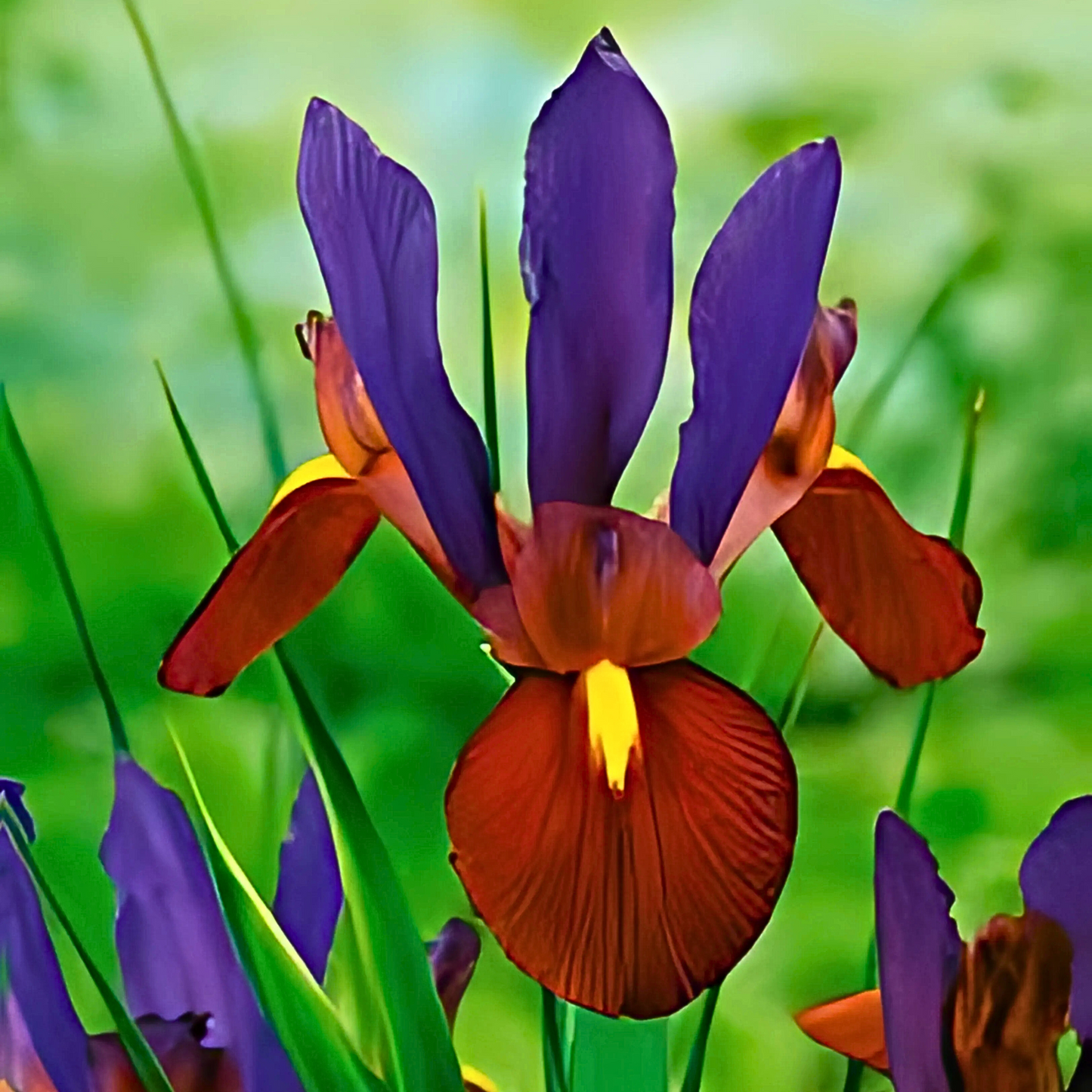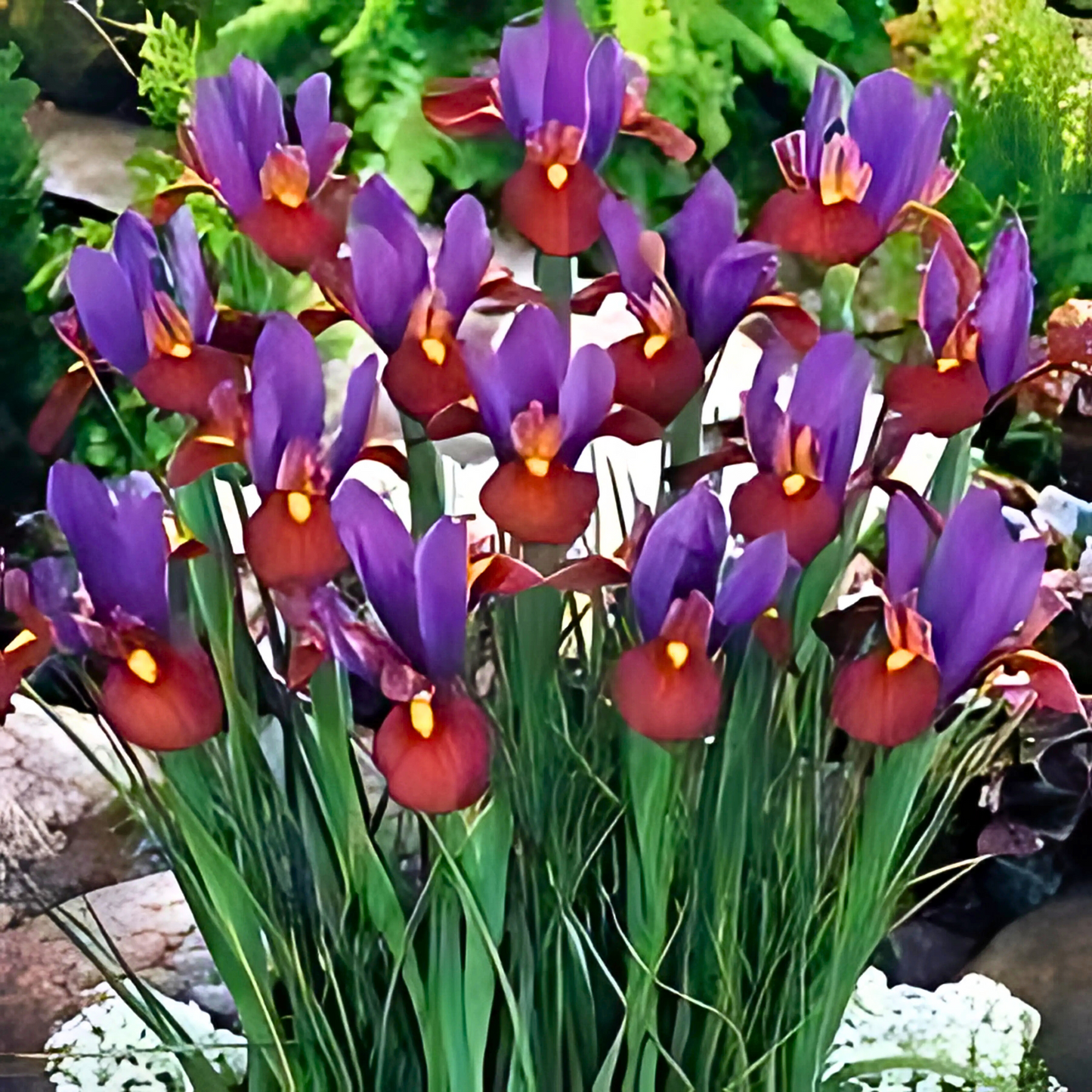1
/
of
2
urbanjungleco.in
Imported Iris Dutch Eye Tiger Bulb
Imported Iris Dutch Eye Tiger Bulb
Regular price
Rs. 199.00
Regular price
Rs. 299.00
Sale price
Rs. 199.00
Unit price
/
per
Shipping calculated at checkout.
Couldn't load pickup availability
About This Product
The Dutch iris (Iris × hollandica) is a popular spring-blooming flower known for its striking, elegant appearance. It features tall, slender stems with large, vibrant flowers in a variety of colors, including shades of blue, purple, yellow, and white. The flowers have a distinct shape, with elongated, spoon-shaped petals and often a contrasting center. Dutch irises are prized for their graceful appearance and fragrance, making them a favorite in gardens and floral arrangements. They bloom in late spring and are easy to grow from bulbs, thriving in full sun and well-drained soil.
Planting Dutch Iris Bulbs:
-
Timing:
- Plant Dutch iris bulbs in the fall (typically September to November) to allow for a cold period before the bloom. This chilling period is necessary for them to flower in spring.
-
Planting Depth:
- Plant bulbs about 3-5 inches (8-12 cm) deep, with the pointed end facing upward.
-
Spacing:
- Space the bulbs 4-6 inches (10-15 cm) apart. This gives each bulb room to grow and prevents overcrowding.
-
Soil:
- Dutch irises prefer well-drained soil rich in organic matter. Ensure the soil is slightly acidic to neutral (pH 6.0-7.0) and well-drained to avoid bulb rot.
-
Location:
- Choose a sunny location where the bulbs will receive at least 6 hours of sunlight per day. Dutch irises thrive in full sun for the best growth and flowering.
Growing Conditions:
-
Temperature:
- Dutch irises require a cool winter to bloom properly in the spring, making them ideal for USDA Hardiness Zones 4-9. They grow best when temperatures are between 50-60°F (10-16°C) during blooming.
-
Watering:
- Water thoroughly after planting to help the bulbs establish roots. Once established, Dutch irises are moderately drought-tolerant but do best with regular watering during dry periods.
- Avoid overwatering, as this can lead to bulb rot. Ensure the soil drains well to keep the bulbs healthy.
-
Fertilizing:
- Use a balanced fertilizer or one that’s low in nitrogen to encourage strong flowering. Apply in early spring when new growth appears, but avoid over-fertilizing, as this can lead to excessive foliage growth with fewer flowers.
Flowering and Bloom Time:
-
Bloom Time:
- Dutch irises typically bloom in late spring (April to May), depending on the climate and growing conditions.
-
Flower Characteristics:
- Dutch iris flowers are tall, with slender, long petals. They are spoon-shaped, and the flowers come in a range of vibrant colors, including blue, purple, yellow, white, and even bi-colored varieties.
- The flowers are fragrant and last for several weeks.
-
Height:
- Dutch irises typically grow to a height of 18–24 inches (45-60 cm), making them perfect for planting in borders or containers.
Post-Bloom Care:
-
Deadheading:
- Once the flowers have faded, it’s a good idea to remove the spent flower heads (deadheading) to prevent the plant from wasting energy on seed production.
-
Leave the Foliage:
- After blooming, allow the leaves to die back naturally. Do not cut back the foliage until it is completely yellowed and withered. The leaves help the bulb store nutrients for next year’s growth.
-
Digging Up the Bulbs:
- In climates with cold winters (below freezing), it's a good idea to dig up Dutch iris bulbs after they have finished blooming, especially if the soil is heavy or poorly draining. Store the bulbs in a dry, cool, dark place until the next planting season.
-
In Warmer Climates:
- In mild climates (USDA zones 7-9), Dutch irises may be left in the ground and can naturalize over time, growing back year after year.
Common Diseases and Pests:
-
Bulb Rot:
- Caused by overwatering or poorly draining soil. Make sure to plant Dutch irises in well-drained soil to avoid this issue.
-
Fungal Diseases:
- Botrytis (Gray Mold) and Leaf Spot can affect Dutch irises, especially in humid conditions. Remove any infected leaves to prevent spread.
-
Aphids and Spider Mites:
- These pests may feed on the flowers and leaves, but can be controlled with insecticidal soap or neem oil.
-
Slugs and Snails:
- These pests can damage the foliage and flowers, so use slug control methods like copper tape or organic slug pellets if needed.



